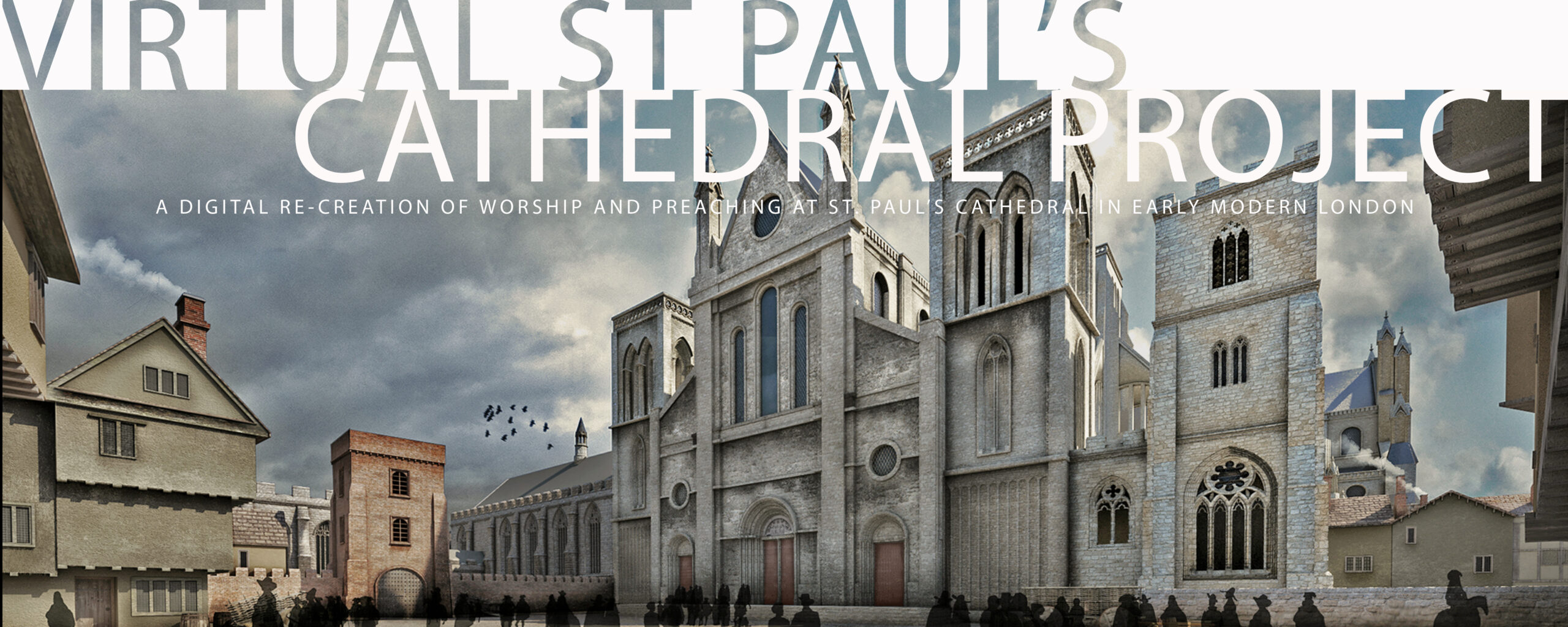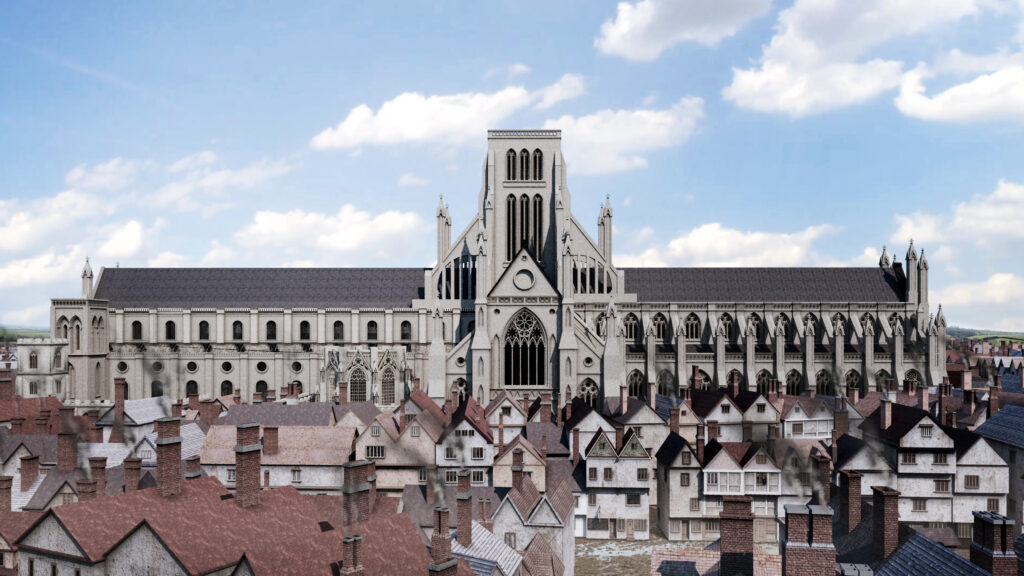
The Dean
John Donne — whom we think of primarily as a writer of poems, sermons, and devotional works — was while Dean of St Paul’s Cathedral an administrator of a medium-sized organization. Under Donne’s supervision, the chief responsibility of the Cathedral was to maintain the daily round of worship services in the Cathedral’s Choir, as scripted by the Book of Common Prayer. This meant that the largest staff at the Cathedral consisted of the people directly responsible for the conduct of worship services.
Each of these groups had assigned seating in the stalls or other seats in the Choir. The role of Dean of a cathedral is to administer the internal management of the Cathedral and its Chapter of Canons. and chapter. In England, secular cathedrals like St Paul’s all had deans, elected by the chapter and confirmed in office by the bishop. Donne, as Dean, served as president of the Chapter of the Prebendiary Canons and was responsible for the performance of the services, taking specified portions of them by statute on the principal festivals.
Donne became Dean of St Paul’s in 1621, after the death of his predecessor Valentine Cary, who had been Dean since 1614. Donne was succeeded as Dean in 1631 by Thomas Winniffe, who remained as Dean until the outbreak of the English Civil War in 1642.
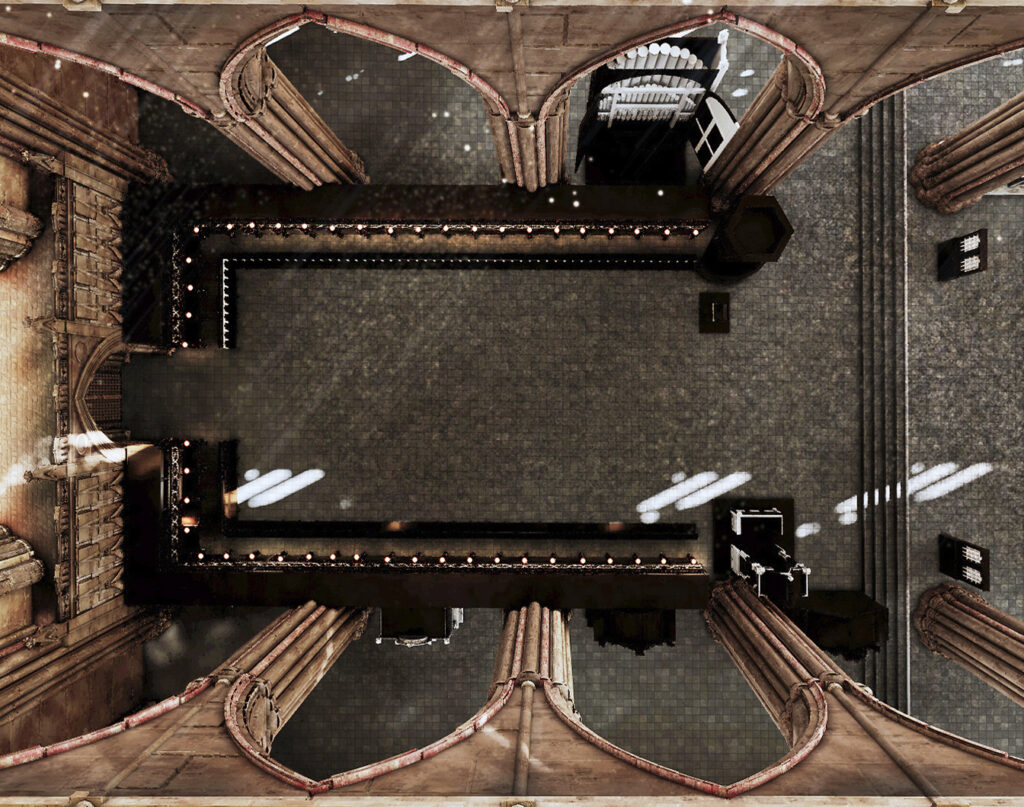
Donne’s responsibility as Dean was thus to make sure the entire operation of the Cathedral functioned as it should. Donne’s assigned seat in the Choir of St Paul’s was the first stall on the right as one passed through the Choir Screen, moving eastward. This is the chief stall in the choir, located at the west end of the south side.
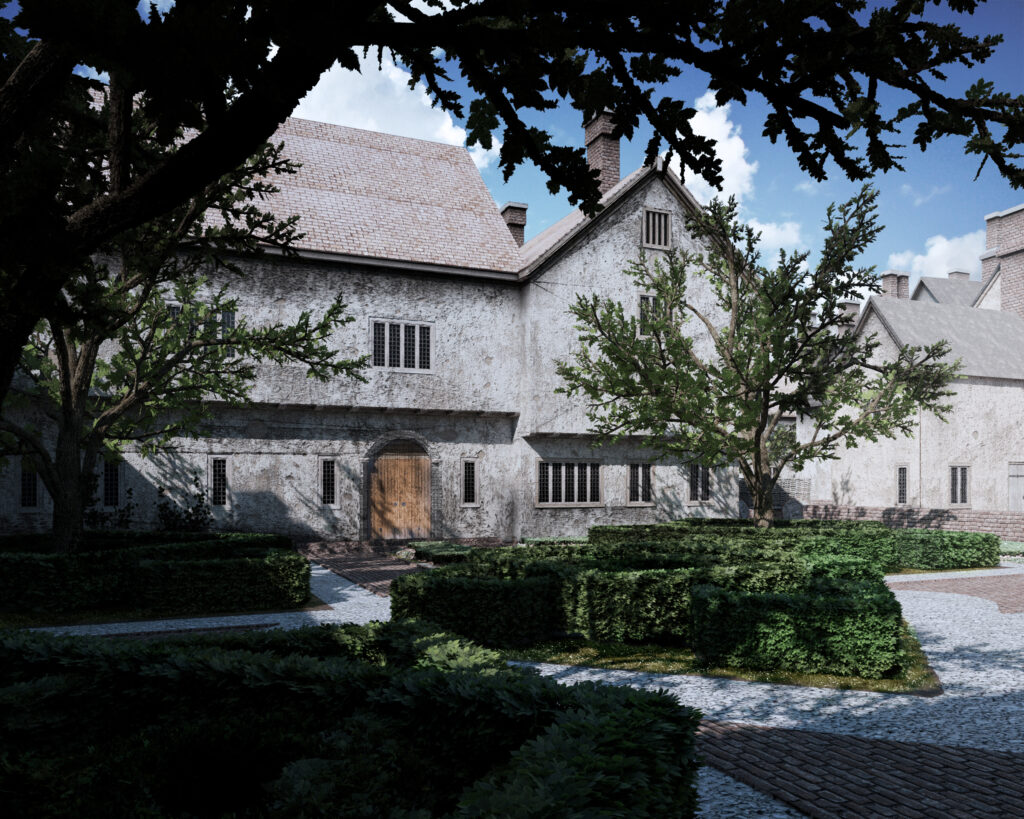
Donne, as Dean, lived in the Deanery, on the southwest side of Paul’s Churchyard.
The Chancellor
The Chancellor was Secretary to the Dean and the Cathedral Chapter. He was also responsible the administration of St Paul’s School, located across the Churchyard from the east end of the Cathedral. He also supervised the practice of reading the scripture lections in the Choir. In the absence of the Dean and Precentor, the Chancellor was president of the chapter.
When Donne became Dean in 1621, the Chancellor was John Bowman, who was Chancellor from 1615 until his death in 1629. He was succeeded by Thomas Turner, who died in 1672. The Chancellor’s seat in the Choir was the third stall on the left side of the Choir.
In Donne’s time as Dean, the Headmaster of St Paul’s School was Alexander Gill, who served as Headmaster from 1608 until his death in 1635. Gill also had a house inside the Churchyard.
During Donne’s tenure, the most prominent student at St Paul’s was John Milton, who was a student at St Paul’s from 1620 until 1625. Milton would have walked to St Paul’s School every day from his family’s house in Bread Street, five blocks to the east of St Paul’s School.
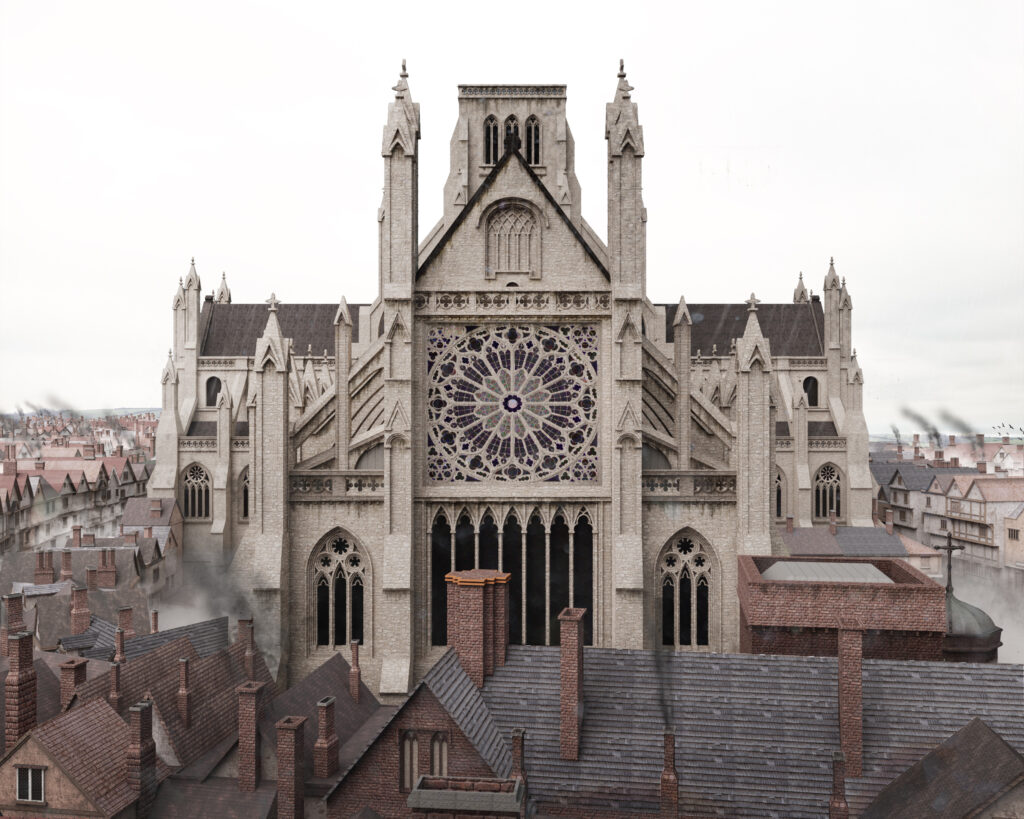
The Treasurer
The Treasurer was responsible for the finances of the Cathedral, working from his office in the Treasury, a structure adjacent to the southeast side of the Cathedral. He was also responsible for the fabric of the Cathedral, and of all the furniture and ornaments of the church, and for providing bread and wine for the Holy Communion and candles for illuminating the Choir. The treasurer also regulated such matters as the ringing of the bells.
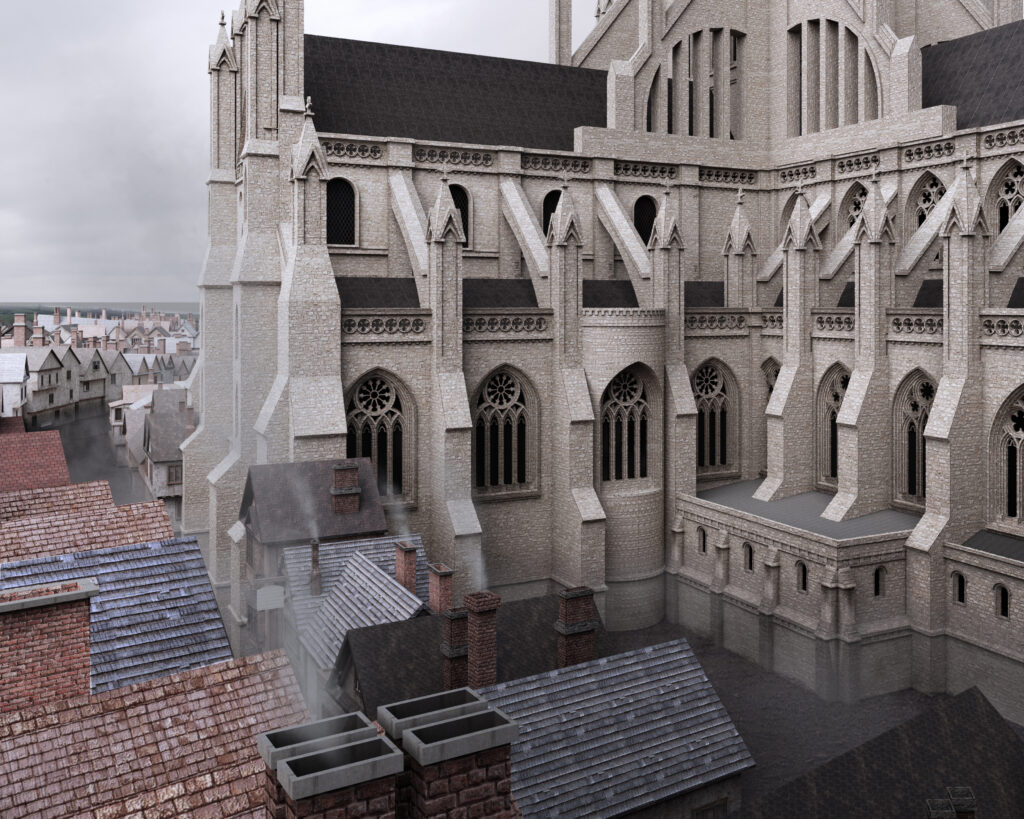
The Treasurer of St Paul’s in Donne’s day was Patrick Young, who held the office from 1621 until his death in 1652. The Treasurer’s seat in the Choir was probably the third Stall on the right side of the Choir.
The Lord Mayor of London was a frequent guests at St Paul’s Cathedral, especially on days of formal visitation for the Lord Mayor and his entourage. When the Lord Mayor of London was present for services at St Paul’s Cathedral, he sat next to the Dean, in the second stall on the right side of the Choir.
Lord Mayors of London were elected for one-year terms from among members of the city’s livery companies, or associations of tradesmen.
People serving as Lord Mayor of London, along with their trade association, during Donne’s tenure as Dean of St Paul’s included Sir Edward Barkam, Draper (1621), Sir Peter Proby, Grocer (1622), Sir Martin Lumley, Draper (1623), Sir John Gore, Merchant Taylor (1624), Sir Allen Cotton, Draper (1625), Sir Cuthbert Hacket, Draper (1626), Sir Hugh Hamersley, Haberdasher (1627), Sir Richard Deane, Skinner (1628), Sir James Cambell, Ironmonger (1629, Sir Robert Ducie, Merchant Taylor (1630), and Sir George Whitmore, Haberdasher (1631).
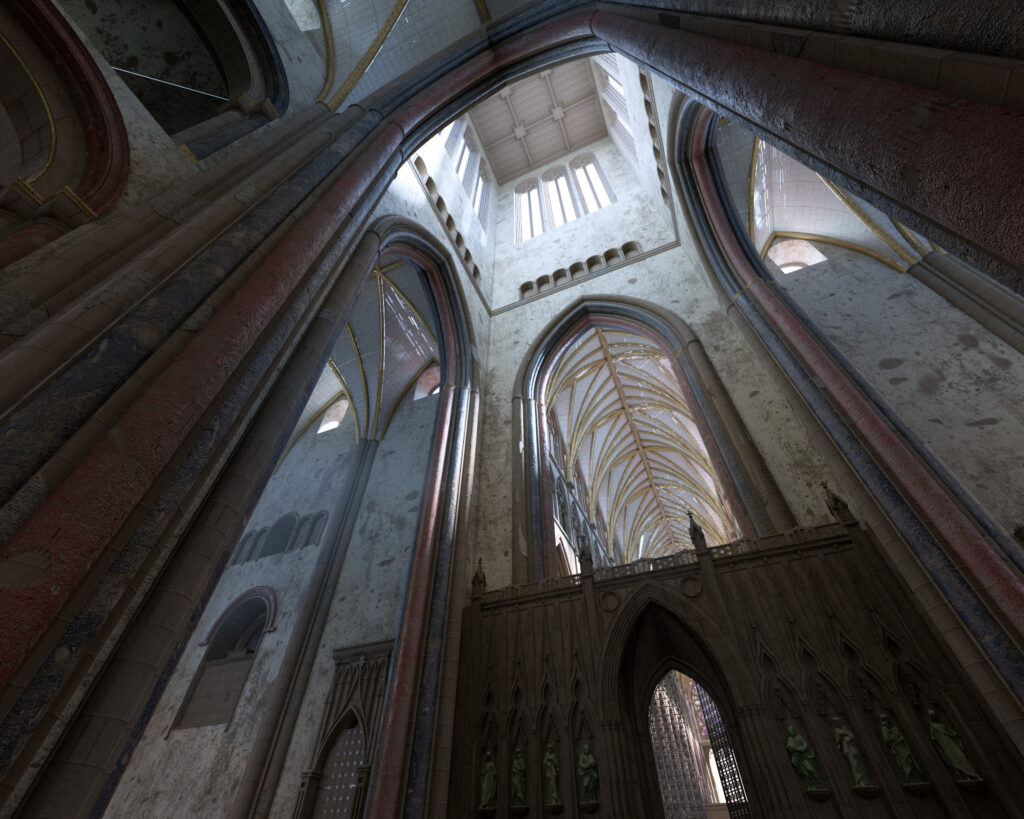
The Precentor
The Precentor was responsible for maintaining the Cathedral Choir. He was assisted by a Succentor, who made sure the Choir met its responsibilities when the Precentor was absent.
The Precentor also presided at meetings of the Cathedral’s Chapter during the Dean’s absence. While the Precentor usually occupied the choir stall on the north side, opposite that of the Dean, at St Paul‘s, the archdeacon of the cathedral city ranks second and occupies what is usually the Precentor’s stall.
In Donne’s day, the Precentor of St Paul’s was Thomas Goad, who held the post from 1618 – 1638. The Precentor’s seat in the Choir was the second stall on the left of the Choir.
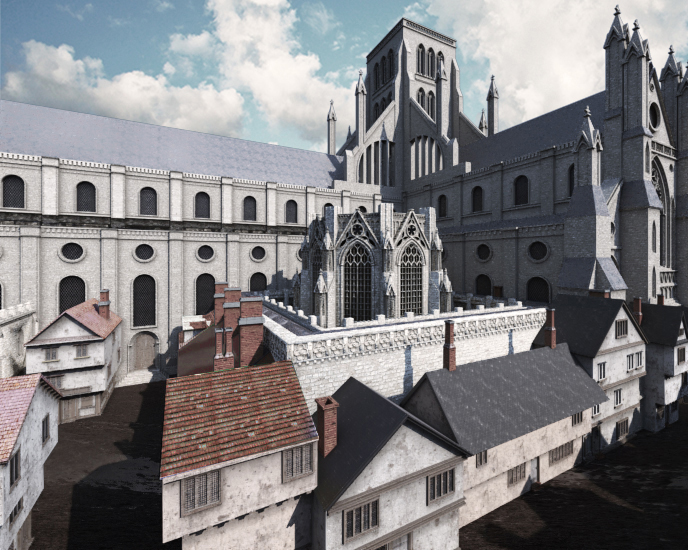
St Paul’s Cathedral, the Chapter House. From the Visual Model, rendered by Austin Corriher.
The Chapter
The Chapter of St Paul’s Cathedral consisted of thirty members of the Clergy, each of whom had his own seat in the Cathedral’s Choir. Members of the Chapter were known as Canons or Prebends of the Cathedral. Each Prebend was funded by income from lands owned by the Cathedral.
Each Prebend was assigned a portion of the Book of Psalms to recite each day, so that, cumulatively, the Chapter of the Cathedral recited the entire Book of Psalms every day. The names of the Prebends and their assigned portions of the Psalter during Donne’s Deanship are listet below.
John Donne, of course, was both Dean and Prebend; during his time as Dean, Donne preached a series of sermons based on his assigned Prebendiary Psalms. preached a series of sermons on the Psalms assigned to him as the Prebend of Chiswick.
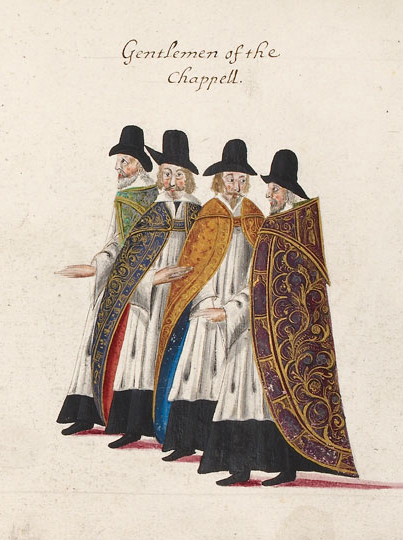
The Prebendaries during Donne’s Tenure as Dean
1. Prebendary of Broomesbury
Incumbent — Isaac Singleton (1614 – 1642)
Psalms: 112 – 117
Stall — 14th Stall on the left of Choir
2. Prebendary of Brownswood
Incumbent — John Barkham (1610-1642)
Psalms: 72 – 76
Stall — 16th Stall on the right side of the Choir
3. Prebendary of Caddington Major
Incumbent — Thomas Wentfield (1615 – 642)
Psalms: 47 – 51
Stall — 17th Stall on the left side of the Choir
4. Prebendary of Caddington Minor
Incumbent — Thomas Soame (1616-1642)
Psalms: 56 – 61
Stall — 5th Stall on the left side of the Choir
5. Prebendary of Cantlers ( aka Kentish Town)
Incumbent — John King (1616-1639)
Psalms: 27 – 31
Stall — 10th Stall on the right side of the Choir
6. Prebendary of Chamberlainwood
Incumbents — Thomas Oates (1618-1623), Thomas Raymond (1623-1631), William Haywood (1631 – 1633)
Psalm: 92
Stall — 5th Stall on the right side of the Choir
7. Prebendary of Chiswick
Incumbent — John Donne (1621-1631)
Psalms: 62 – 66
Stall — 18th Stall on the left side of the Choir
8. Prebendary of Consumpta-Per-Mare
Incumbent — Richard Franklin (1614-1637)
Psalms: 105 – 106
Stall — 13th Stall on the left side of the Choir
9. Prebendary of Ealdland
Incumbent — John Barkham (1610-1642)
Psalms: 82 – 86
Stall — 10th Stall on the left side of the Choir
10. Prebendary of Ealdstreet
Incumbents — John Whiting (1615-1625), Richard Taylour (1625 – 1642)
Psalms: 93 – 101
Stall — 18th Stall on the right side of the Choir
11. Prebendary of Harleston
Incumbent — Thomas Montford (1597 – 1632)
Psalms: 87 – 91
Stall — 7th Stall on the right side of the Choir
12. Prebendary of Holbourn
Incumbents — Thomas Puckeringe (1596 – 1627), Thomas Worral (1627 – 1639)
Psalms: 12 – 16
Stall — 16th Stall on the right side of the Choir
13. Prebendary of Holywell ( alias Finsbury)
Incumbents — Theophilus Aylmer (1583-1626), George Coke (1626-1636).
Psalms: 144 – 150
Stall — 4th Stall on the right side of the Choir
14. Prebendary of Hoxton
Incumbent — John Simpson (1610-1642)
Psalms: 119, verses 83 – 176
Stall — 16th Stall on the right side of the Choir
15. Prebendary of Islington
Incumbent — William Rogerson (1604-1638)
Psalms: 126 – 131
Stall — 11th Stall on the left side of the Choir
16. Prebendary of Mapesbury
Incumbent — John Bancroft (1609-1632)
Psalms: 132 – 137
Stall — 12th Stall on the right side of the Choir
17. Prebendary of Mora
Incumbents — Thomas Whyte (1588 – 1624), Thomas Winniffe (1624 – 1642)
Psalms: 138 – 143
Stall — 9th Stall on the right side of the Choir
18. Prebendary of Neasdon
Incumbents — John Foxe (1591 – 1623), Thomas Wilson (1623 – 1642)
Psalms: 6 – 11
Stall — 15th Stall on the left side of the Choir
19. Prebendary of Newington
Incumbents — William Prichard (1620 – 1629), Thomas Turner (1629 – 1642)
Psalms: 118, 119, verses 1 – 82
Stall — 16th Stall on the left side of the Choir
20. Prebendary of Oxgate
Incumbent — William Paske (1618-1639)
Psalms: 102 – 104
Stall — 13th Stall on the right side of the Choir
21. Prebendary of Pancratius
Incumbent — Henry King (1616-1642)
Psalms: 77 – 81
Stall — 6th Stall on the left side of the Choir
22. Prebendary of Portpool
Incumbents — Gregory Dunkett (1614-1624), Thomas Worrall (1624-1627), John Harris (1628 – 1642)
Psalms: 52 – 55
Stall — 8th Stall on the right side of the Choir
23. Prebendary of Reculversland (aka Tillingham)
Incumbent — Leonard Hutton (1609-1632)
Psalms: 32 – 36
Stall — 7th Stall on the left side of the Choir
24. Prebendary of Rugmere
Incumbent — Zachariah Goddell (1590-1642)
Psalms: 120 – 125
Stall — 17th Stall on the right side of the Choir
25. Prebendary of Sneating
Incumbent — John Mountford (1618-1642)
Psalms: 22 – 26
Stall — 14th Stall on the right side of the Choir
26. Prebendary of Totenhall (aka Tottenham)
Incumbent — William Shaw (1614 -1642)
Psalms: 1 – 5
Stall — 4th Stall on the left side of the Choir
27. Prebendary of Twyford
Incumbent — Robert Kerchier (1614-1642)
Psalms: 67 – 71
Stall — 11th Stall on the right side of the Choir
28. Prebendary of Wenlacksbarn
Incumbent — Samuel Fell (1613-1642)
Psalms: 42 – 46
Stall — 15th Stall on the right side of the Choir
29. Prebendary of Wildland
Incumbent — William Pierse (1618-1630), Robert Thompson (1630-1642)
Psalms: 17 – 21
Stall — 8th Stall on the left side of the Choir
30. Prebendary of Willesden
Incumbent — John Barkham (1610-1642)
Psalms: 37 – 41
Stall — 12th Stall on the left side of the Choir
The Bishop of London
When John Donne became Dean of St Paul’s Cathedral, the Bishop of London was George Montaigne, who had served previously as Bishop of Lincoln. Montaigne became Bishop of London in 1621, then became Bishop of Durham in 1627. He was also named Archbishop of York in 1628, but died later that year.

George Montaigne, Bishop of London (1621-1627). Image courtesy Wikimedia Commons.
Montaigne’s predecessor as Bishop of London was John King, who ordained John Donne to the diaconate and priesthood on the same day in 1615.
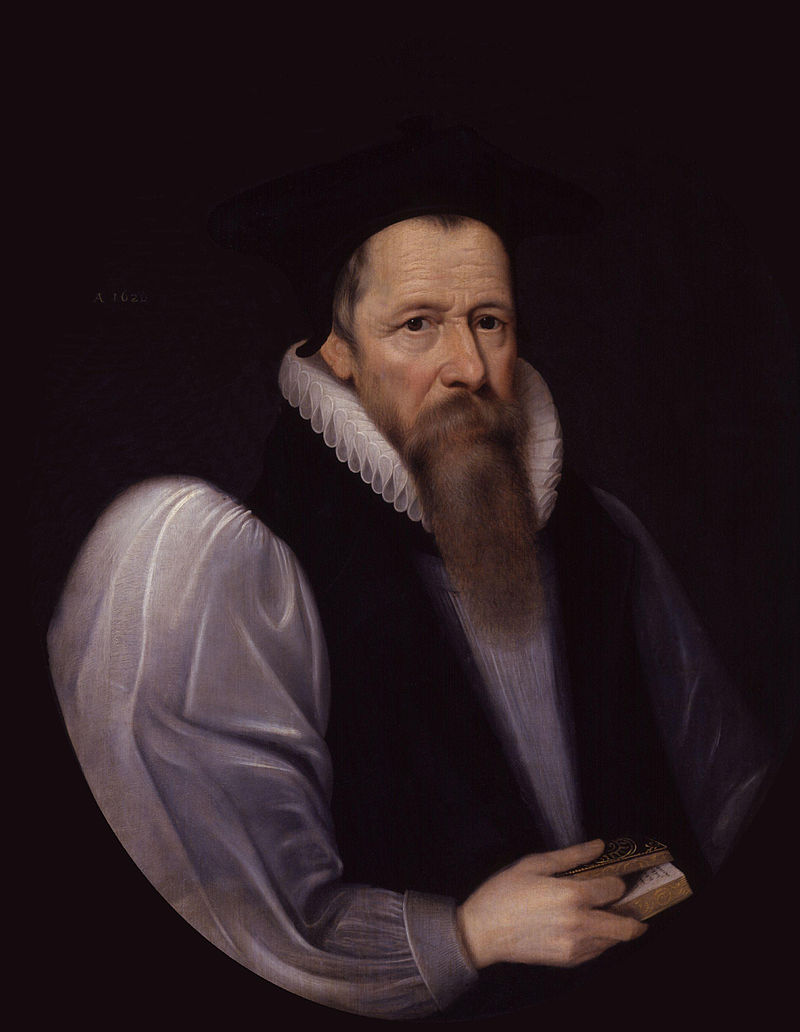
John King, Bishop of London (1611-1621). Image courtesy Wikimedia Commons.
William Laud was named Bishop of London to succeed George Montaigne. Laud had served previously as Bishop of St David’s and Bishop of Bath and Wells; later, in 1633, he was elevated to become the Archbishop of Canterbury.

William Laud, Bishop of London (1627 – 1633). Image courtesy Wikimedia Commons.
The Bishop of London lived in the Bishop’s Palace, on the northwest side of Paul’s Churchyard.
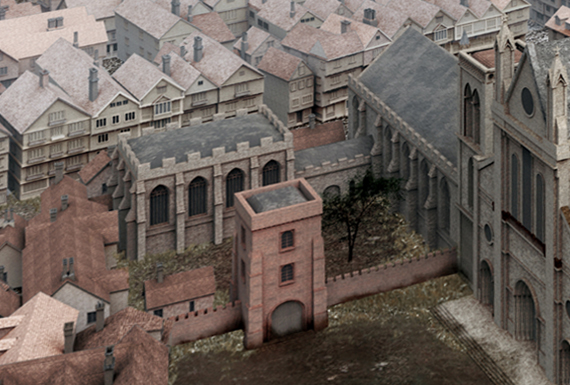
The Bishop had his own private chapel, adjacent to the northwest wall of St Paul’s Cathedral, where Bishop John King ordained Donne to the priesthood in 1615.
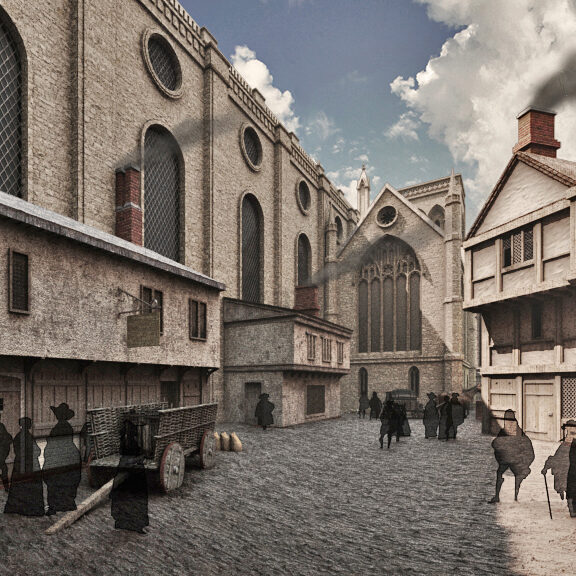
The Bishop of London, when he attended services in St Paul’s Cathedral, sat in his official throne, or cathedra, at the east end of the south Choir stalls.

Bishop of London’s Staff
Others with seats in the Choir were members of the staff of the Bishop of London, including:
The Archdeacon of London, who sat in the first stall on the left side of the Choir, the stall opposite to that of the Dean. The Archdeacon of London when Donne became Dean of the Cathedral was Theophilus Aylmer, who had been appointed in 1591 and continued as Archdeacon until his death in 1626. Aylmer was then replaced by Thomas Parke, who died in 1662.
The Archdeacon of Middlesex, who was Richard Cluett, appointed in 1620 and remained in this post throughout Donne’s tenure.
The Archdeacon of Essex, who was George Goodman, appointed in 1609 and remained in this post throughout Donne’s tenure.
The Archdeacon of Colchester, who was Henry King, appointed in 1617 and remained in this post throughout Donne’s tenure.
The Archdeacon of St Alban’s, who was William Hutchinson in 1621, having been appointed in 1581, and who served until 1626, when he was replaced by Thomas Raymond, who served until 1631.

